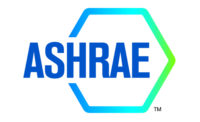ATLANTA — ASHRAE has released updated editions of its standards for ventilation system design and acceptable indoor air quality (IAQ).
ANSI/ASHRAE Standard 62.1-2019, “Ventilation for Acceptable Indoor Air Quality,” specifies minimum ventilation rates and other measures for new and existing buildings that are intended to provide IAQ that is acceptable to human occupants and that minimizes adverse health effects.
Significant changes to Standard 62.1 include:
• New informative tables of ventilation rates per unit area for checking new and existing building ventilation calculations;
• Simplified version of the ventilation rate procedure, improving calculations for system ventilation efficiency, and zone air distribution effectiveness;
• Modified natural ventilation procedure calculation methodology;
• Revised scope to specifically identify occupancies previously not covered;
• New requirement that natural ventilation consider the quality of the outdoor air and interaction of the outdoor air with mechanically cooled spaces; and
• Humidity control requirements now expressed as dew point instead of relative humidity.
ANSI/ASHRAE Standard 62.2-2019, “Ventilation and Acceptable Indoor Air Quality in Residential Buildings,” defines the roles of and minimum requirements for mechanical and natural ventilation systems and the building envelope intended to provide acceptable indoor air quality in residential buildings.
The 2019 edition of Standard 62.2 adds a compliance path that gives credit for particle filtration, distinguishing between balanced and unbalanced ventilation system interactions with natural infiltration, requiring compartmentalization limits for new multifamily dwellings and allowing for single-point envelope leakage test results to be used when calculating infiltration credit.
“These standards have undergone key changes over the years, reflecting the ever-expanding body of knowledge, experience, and research related to ventilation and air quality,” said Jennifer Isenbeck, chair of SSPC 62.1. “The purpose of both standards remains unchanged, yet the means of achieving this goal have evolved. These updated standards will provide greater clarity with the hope of creating healthier indoor environments for people in buildings.”
For more information, visit www.ashrae.org/bookstore.



